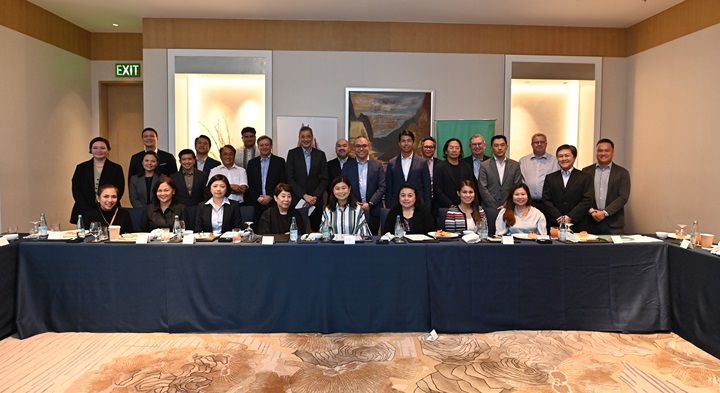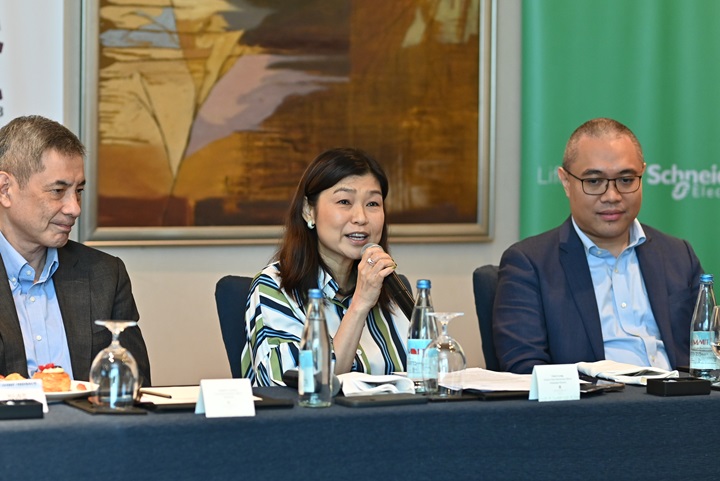- Chris Leong, Chief Marketing Officer of Schneider Electric, emphasizes three pillars that businesses should implement to future-proof their operations: Electrification, Automation, and Digitalization.
- Schneider Electric identified pivotal megatrends shaping industries and customer needs that present opportunities for businesses to innovate.
Schneider Electric, a global leader in energy management and automation, is urging local industries, including data centers, infrastructure, manufacturing, power and grid, and water utilities, to embrace sustainability as a core business growth strategy, rather than merely a corporate social responsibility initiative.

Path Towards a Future-ready Business Landscape,” Schneider Electric and Makati Business Club gathered business leaders and executives from various industries and discussed how businesses can integrate sustainability in their business growth strategies.
As the world confronts the challenges of climate change, rising energy costs, and the current Administration’s prioritization towards sustainable development, Schneider Electric emphasizes the importance of integrating sustainability into all aspects of their operations to maintain competitiveness and future-readiness.
During a recent roundtable discussion hosted by Schneider Electric together with the Makati Business Club, Schneider Electric’s Chief Marketing Officer and one of Forbes’ 2024 most influential CMOs in the world, Chris Leong, stated that sustainability is no longer optional but essential for long-term business success. “At Schneider Electric, we believe that sustainability should be the heart of business strategy, driving growth, innovation, and value creation. Through electrification, automation, and digitalization, we empower industries to achieve this transformation.”
Schneider Electric’s approach to sustainability is built on three-prong strategies: Strategize, Digitize and Decarbonize.
Strategize is all about setting measurable and strategic sustainability ambitions. For Schneider Electric, all the research and development of the brand is centered on its sustainability goals. The Schneider Electric Sustainability Impact Program (SSI), a concrete and measurable roadmap, tracks the company’s progress towards its environmental, societal and governance (ESG) targets. The report is published quarterly through the company website. Digitize is all about digitalizing tools to capture energy usage and carbon footprint in real time. All Schneider Electric distribution hubs and manufacturing facilities across the world are equipped with digital solutions allowing facilities to harness data analytics real time to measure operational efficiency. Meanwhile, Decarbonize refers to the action plan. Schneider Electric’s end-to-end portfolio of technologies brings electrification to reality, leveraging these solutions enable real time monitoring of energy usage and carbon impact possible contributing to business profitability goals.
Megatrends Shaping the Future
Schneider Electric has identified five pivotal megatrends shaping industries and customer needs: Digitization and Artificial Intelligence (AI) brought about by the global digital transformation scaling up significantly power usage, need for concrete solutions to fight against Climate Change, Energy Transition through electrification, Evolution of Wealth driven by increased demand in electrification and data that provide fresh opportunities to emerging economies as countries and companies alike rethink how they operate, and new Global Equilibrium where there is a shift in paradigm due to supply chain evolutions.

Leong highlighted that these megatrends offer opportunities for businesses in various industries to innovate. “Digitization and AI are transforming energy management. Climate change drives the shift to renewables, reshaping industries, and markets,” she added.
A heightened focus on Environmental, Social, and Governance (ESG) can catalyze innovation, efficiency, cost reduction, and business growth. It presents opportunities to tap into new markets, attract conscious consumers, and enhance long-term resilience. For instance, research conducted with WSP Global Inc., a design and engineering consulting firm, found that digital building and power management solutions help in reducing operational carbon emissions in existing office buildings by up to 42 percent, with return on these investments can be expected in around three years.
Leong concluded, “We are more than a technology provider. As sustainability practitioners, we empower our partners to achieve their ESG goals through innovative digital solutions. Our recommendation is to not shy away from action but make environmental claims that are clear, credible, and can be verified because sustainability is our passport to operate in the future.”
Schneider Electric’s commitment to sustainability was recently recognized by Time Magazine and Statista, naming it the world’s most sustainable company. The company has helped customers save and avoid their carbon emissions by 553 million tonnes of CO2 since 2018.

